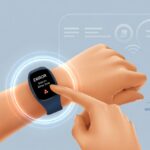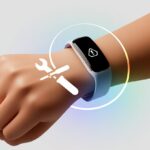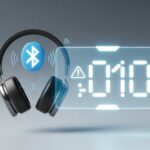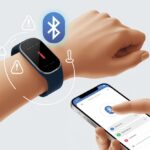We’ve all been there—ditching wires for good, only to have Bluetooth headphones throw an error code and ruin the vibe. If you’ve run into the infamous “Bluetooth headphones error code 201,” don’t panic or toss your headphones in frustration just yet.
Here’s the thing: error code 201 usually points to a connection hiccup or a cranky driver, and, honestly, it’s often not as bad as it looks. A few quick fixes can get you back in the groove.
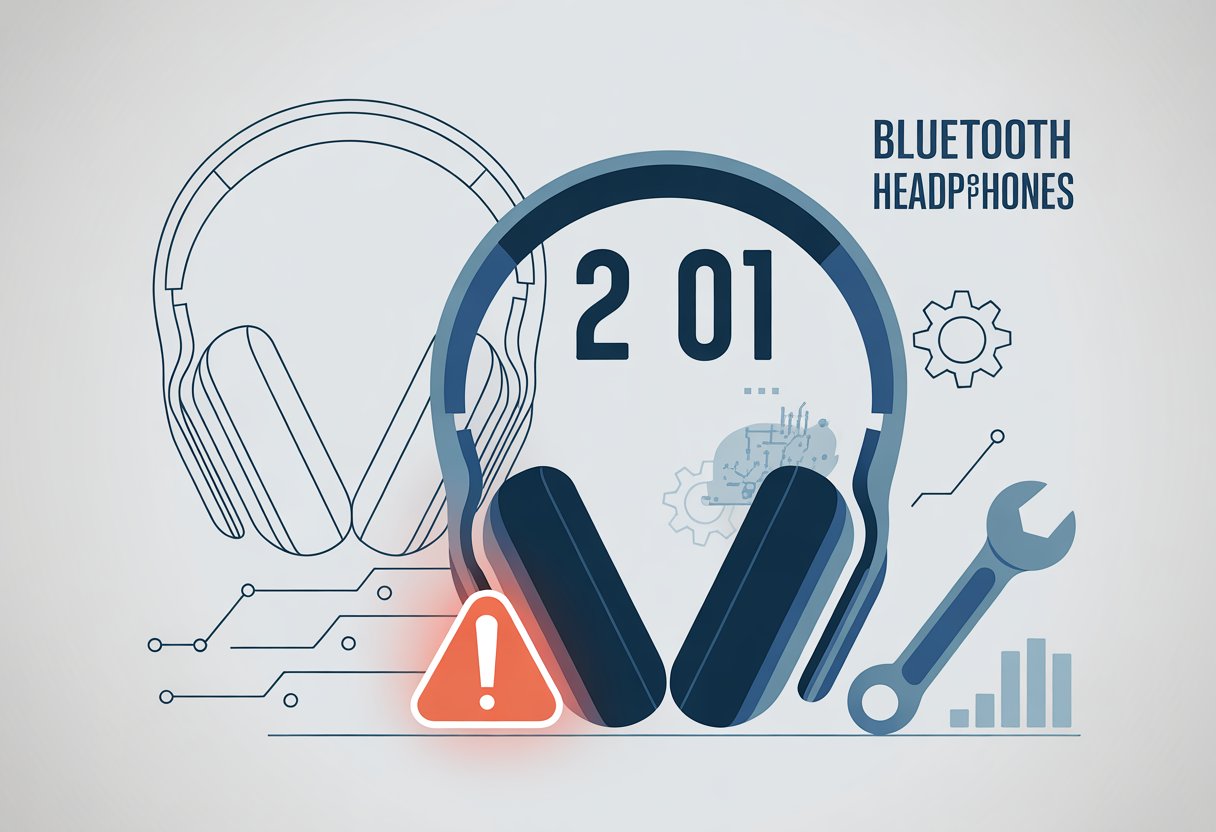
Let’s be real—these errors can feel like unsolvable mysteries. But we’ll walk you through resetting connections, wrangling drivers, and keeping your playlists alive.
Stick around. We promise, sorting out this mess is easier than you think (and you won’t have to yell at your headphones—well, not much).
Understanding Bluetooth Headphones Error Code 201
Staring at error code 201 feels like your headphones are sending you a cryptic breakup text. Don’t rush to blame the headphones or your phone just yet.
Let’s figure out what this code actually means and what’s usually behind it.
What Is Error Code 201?
Error code 201 pops up when your Bluetooth headphones just refuse to pair or connect. It’s basically their way of saying, “Nope, not today.”
You’ll see this code when you’re trying to connect headphones to your phone, tablet, or computer. The devices spot each other, but for some reason, they just won’t “talk”—like two people at a party pretending they don’t see each other.
You might get a message like “Pairing attempt failed.” Until you fix it, your music, podcasts, or work calls are stuck in limbo.
Most of the time, error 201 is annoying but not a lost cause. Wireless tech still loves to test us, but it’s usually fixable.
Common Causes of Error Code 201
So, why do your headphones hit you with error 201? A few usual suspects come to mind:
- Too Many Connections: If your headphones are already paired to another device, they might ignore your new pairing attempt. Most headphones are monogamous—one device at a time.
- Software Problems: Outdated Bluetooth drivers or old headphone firmware can mess things up. If you haven’t updated in a while, your devices might as well be speaking different languages.
- Compatibility Conflicts: Sometimes, your headphones just don’t get along with your device’s Bluetooth version. It’s like trying to fit a square peg in a round hole.
- Bluetooth Is Acting Up: Occasionally, Bluetooth on your device just gets grumpy. Restarting or resetting both the device and the headphones can work wonders, as this Bluetooth troubleshooting guide suggests.
- Interference or Range Issues: Too much wireless noise or being too far from your device can make the connection fail and throw error 201 at you for fun.
Error 201 can show up for plenty of reasons, but with a little patience, you can usually fix it. And hey, you’ll probably avoid breaking anything in the process.
Essential Pre-Fixes Before You Dive In
Before you start chasing down error code 201 like it owes you money, check the basics. Sometimes, a quick look at your Bluetooth settings or making sure your headphones actually work with your device saves a lot of hassle.
Checking Your Bluetooth Connection
First step: make sure Bluetooth is on. Seriously, it sounds obvious, but you’d be surprised how often it gets missed.
Look for the Bluetooth icon in your settings or notification bar. If it’s not there, you might as well be searching for Bigfoot.
Try toggling Bluetooth off and then back on. Sometimes, the signal just needs a little nudge.
If things still aren’t working, try pairing with another device. If your headphones connect elsewhere, the problem probably isn’t with the headphones.
Distance and random objects can mess with the Bluetooth signal. Move closer to your device, or clear away any coffee mugs, laptops, or even the cat that might be in the way.
Turning off other nearby Bluetooth devices can help too. If you want more detail, these Bluetooth troubleshooting tips are worth a look.
Verifying Bluetooth Headphones Compatibility
Let’s play detective for a second. Are your headphones and your device even meant to work together?
Bluetooth comes in different versions, and sometimes new headphones just won’t play nice with old phones or laptops.
Check your device’s Bluetooth version and compare it to your headphones. If your phone is rocking Bluetooth 2.0 from the Jurassic period, and your headphones need Bluetooth 5.0, it’s just not going to work.
Look up the official compatibility lists for your gadgets. Manufacturers love to hide this info deep in the manual or online.
If you’re stumped, try another pair of Bluetooth headphones. If those work, you’ve found your culprit. This quick troubleshooting guide can help if you’re still unsure.
Pairing Problems and Simple Solutions
Bluetooth headphones really know how to push our buttons. But if you stick to the basics, you can get past most pairing headaches and get back to your music—or whatever guilty pleasure podcasts you’re into.
Activating Pairing Mode the Right Way
Let’s talk about the ancient Bluetooth ritual: activating pairing mode. Some gadgets demand button gymnastics.
Usually, you just hold the power or pairing button for a few seconds until a light blinks or you hear a voice prompt. If nothing happens, check the manual—or just stare at it and hope for the best.
If your headphones are still stubborn, put them back in their case and start over. Turning Bluetooth off and on again on your phone or tablet helps more than you’d think.
Fancy earbuds might need you to forget or remove them from your device’s Bluetooth list before you reconnect. If you’re lost, this step-by-step guide can walk you through it.
Restarting both the headphones and your device can also work wonders. Simple, but honestly, it’s saved me more times than I can count.
Tackling Pairing Issues With Multiple Devices
Bluetooth gadgets can be a bit jealous. Many headphones remember old devices and won’t pair with a new one until you clear the slate.
If your headphones are paired with something else, disconnect or “forget” them on those devices. That way, they’ll be ready for a fresh pairing.
If you’ve got several devices fighting for attention, keep only one in pairing mode at a time. Less drama, more music.
Sometimes, your headphones need a factory reset. It sounds drastic, but it wipes old connections and can fix weird bugs. Some earbuds have weird steps—like holding two buttons at once or doing a case and dongle dance.
Basically: control the chaos, and your Bluetooth gear will usually cooperate.
Bluetooth Settings And Their Secret Life
Bluetooth settings love to hide important options under layers of menus. Sometimes, the difference between Windows 10 and Windows 11 is just enough to make you want to scream.
Getting familiar with these settings is the secret to keeping your Bluetooth headphones happy.
Windows 10 hides Bluetooth settings, but you can find them with a few clicks. Start by hitting the Start Menu, go to Settings, then Devices, and choose Bluetooth & other devices.
There’s a toggle here to turn Bluetooth on or off. If your headphones aren’t showing up, double-check that this is “On.” If you don’t see the button, Windows might be missing a driver or the device itself.
A quick restart sometimes helps. If not, you might need to update or install the right driver.
When you’re ready to pair your headphones, click Add Bluetooth or other device, pick Bluetooth, and your headphones should pop up. Select them to pair.
If things still go sideways, remove the device from the list and try again. More tips are in this Windows 10 Bluetooth guide.
Bluetooth Settings Tips for Windows 11
Windows 11 changed things up, and Bluetooth settings got a fresh coat of paint—sometimes a little too fresh. Click the Start button, open Settings, then go to Bluetooth & devices.
Check that the Bluetooth switch at the top is glowing. If your headphones won’t connect, hit View more devices to see everything paired.
Sometimes, clicking Remove device and pairing again does the trick.
If you’re still stuck, try the built-in Bluetooth troubleshooter for Windows 11. Also, check for Windows Updates and Bluetooth driver updates right from the same menu. A driver update can be the missing ingredient.
If you’re feeling brave, click the three dots next to the device for advanced settings like connection priority or audio codecs. Only go there if you’re desperate for better sound or love to tinker.
Troubleshooting Steps for Error Code 201
When error code 201 pops up, it feels like you’re wrestling invisible wires. But a few steps can outsmart your devices and get Bluetooth working again.
Running the Bluetooth Troubleshooter
Let Windows do some heavy lifting for you. The built-in Bluetooth troubleshooter is basically tech’s version of a magic wand—just, you know, without the sparkle.
Here’s how to run it:
- Click Start and type
troubleshootin the search bar. - Select Troubleshoot settings.
- Find Bluetooth and click Run the troubleshooter.
If your headphones are still acting up, Windows might suggest checking your drivers. Head to Device Manager, look under Bluetooth, and see if there are any red or yellow icons hanging around.
Try rolling back or updating the driver if needed. Microsoft Support has more details if you need them.
Let the troubleshooter do its thing, and follow any extra advice it gives—like pairing the device again or restarting your PC. Sometimes, the answer really is just a few clicks away. And hey, at least you don’t have to leave your chair.
The Magic of Toggling Airplane Mode
Alright, let’s actually try airplane mode. It might sound a bit goofy, but toggling this setting can fix weird Bluetooth issues faster than you’d expect. I mean, why not just try it?
Here’s how we do it:
- Open the Action Center (just hit Windows key + A).
- Click Airplane mode to turn it on. Wait a few seconds—hum the Jeopardy theme if you want.
- Click it again to turn airplane mode off.
Flipping airplane mode on and off resets our PC’s wireless connections. This little trick often snaps Bluetooth back to reality and lets us connect our headphones without that annoying 201 error.
It’s quick, painless, and honestly, it makes me feel like I’m about to board a flight—minus the tiny drinks.
If it doesn’t solve things, at least we know we tried. Maybe we’ll start appreciating airplane mode for more than just saving battery at cruising altitude.
Updating Drivers and Keeping Your Tech Happy
Nobody wants Bluetooth problems hanging around like leftovers in the fridge. A few updates and tweaks can sort out error code 201 faster than you can untangle a headphone cable.
How to Update Bluetooth Drivers Manually
If our Bluetooth headphones keep nagging us with error code 201, it’s time for a manual driver update adventure. The best place for drivers is always the manufacturer’s website—never trust those random pop-ups promising miracles.
We’ll need to know our exact device model before downloading anything.
Here’s a quick checklist:
- Visit the manufacturer’s support site.
- Search for our computer model and grab the latest Bluetooth drivers.
- Download the correct driver (make sure it matches our Windows version).
- Run the file and follow the steps.
Restarting after the update just feels right. If things still act up, try running the Bluetooth troubleshooter. Sometimes it catches stuff we’d never think of.
Using Device Manager Like a Pro
Let’s dig into Device Manager—the secret spot for fixing Bluetooth drama. Device Manager lets us update, disable, or uninstall those stubborn Bluetooth drivers.
Here’s how to get started:
- Press Windows Key + X and choose Device Manager.
- Expand the Bluetooth section.
- Right-click our Bluetooth device and pick Update driver.
- Choose Search automatically for updated driver software.
No updates show up? No worries. Pick Uninstall device, restart, and let Windows find the right driver when it boots. If you’re feeling bold, hit Scan for hardware changes so Device Manager double-checks for missing stuff.
For more help, check out this Bluetooth driver update guide.
Resolving Persistent Bluetooth Headphones Issues
When our Bluetooth headphones start acting up, it’s more than just a small annoyance. Suddenly, we’re stuck with glitchy sound or the dreaded Code 201.
Let’s try to fix these tech hiccups without losing our minds.
Advanced Bluetooth Adapter Fixes
First, make sure our Bluetooth adapter isn’t causing trouble. Unplug the adapter (or turn off built-in Bluetooth), then plug it back in like you mean it.
This old trick actually works more often than you’d think.
If that doesn’t help, open Device Manager. Find the Bluetooth adapter, right-click, and hit “Uninstall device.” After a quick reboot, Windows usually reloads the drivers and sometimes clears up weird errors like Code 201.
Staying careful with driver updates helps too. The latest Bluetooth version sometimes needs a matching driver. If the driver doesn’t play nice with our headphones, chaos (and static) can follow.
Keep an eye on update notifications and check the manufacturer’s site now and then. If errors just won’t give up, some folks on tech forums suggest reinstalling or updating drivers, like in this Reddit thread for Bluetooth errors.
Checking for Audio Quality Surprises
We all want crisp sound, but sometimes our headphones betray us with scratchy or muffled audio. These issues often sneak in when Windows sets our headphones to “hands-free” or “communication” modes instead of Stereo.
Right-click the volume icon, choose “Sounds,” and make sure the right playback device is selected.
Switching from “Hands-Free” to “Stereo” usually brings music back to normal. If Windows refuses, check the Bluetooth device properties and uncheck anything called “Hands-Free Telephony.”
This can help dodge a lot of classic audio quality disappointments.
Some newer Bluetooth versions offer better sound but need a compatible adapter. If Bluetooth versions don’t match, weird sound or connection errors happen.
Keeping our adapter updated to support new headphones is a sneaky but essential fix, as explained on this Microsoft support page about Bluetooth audio not connecting.
Beyond Headphones: Extra Steps for the Truly Cursed
Sometimes Bluetooth gremlins just won’t quit, even after we try all the basics. If fixing the headphones alone doesn’t help, we might need to get a little creative—test other devices or mess with settings most people never touch.
Switching Bluetooth Profiles for Better Results
Bluetooth isn’t a one-size-fits-all thing. Different Bluetooth profiles do different jobs—A2DP for music, HFP for calls, AVRCP for playback control.
Sometimes, headphones get stuck on the wrong profile or refuse to switch.
Try disconnecting and reconnecting the headphones, or toggle airplane mode for a few seconds. On computers, right-click the audio icon and pick the right Bluetooth profile yourself.
On phones, poke around in Bluetooth settings to see if you can change the profile.
If music sounds robotic or calls don’t work, it’s probably a profile mismatch. Switching profiles can save our ears from a lot of pain.
Solving Bluetooth File Transfer Snafus
It’s wild how sending one photo over Bluetooth can trip everything up. Bluetooth file transfer errors pop up when devices disagree about file size, type, or where the file’s going.
First, make sure both devices support OBEX or the right Bluetooth file transfer profile. Some phones and laptops block file transfers for “security,” which is just a fancy way of saying they don’t trust us.
Look for “Receive files” or “Accept files” in Bluetooth settings before sending anything. Try sending something tiny, like a text file, before a huge video from Aunt Linda’s birthday.
If the small file works, the problem’s probably just the file size.
Testing with Other Bluetooth Accessories and Speakers
Honestly, we can’t blame our headphones for every problem—maybe Bluetooth just has it out for us sometimes. Try plugging in a Bluetooth speaker or connecting another Bluetooth accessory, like a keyboard or mouse.
If those work, at least our computer or phone isn’t totally borked. But if none of our gadgets connect, we probably need to update or reinstall the Bluetooth driver.
You could even grab a friend’s Bluetooth audio device and see if that changes anything. Sometimes it honestly feels like the universe is just messing with us.
When nothing seems to work, maybe it’s time to just accept defeat and carry wired backup headphones everywhere. Can’t hurt, right?
- Best Bluetooth Headphones for Airplane Travel: Drown Out Crying Babies in Style - December 8, 2025
- How to use Bluetooth headphones with an intercom system and Finally Escape Tangled Wires - December 7, 2025
- Best Fitness Trackers for Silent Alarms: Wake Up Without the Drama - December 7, 2025

